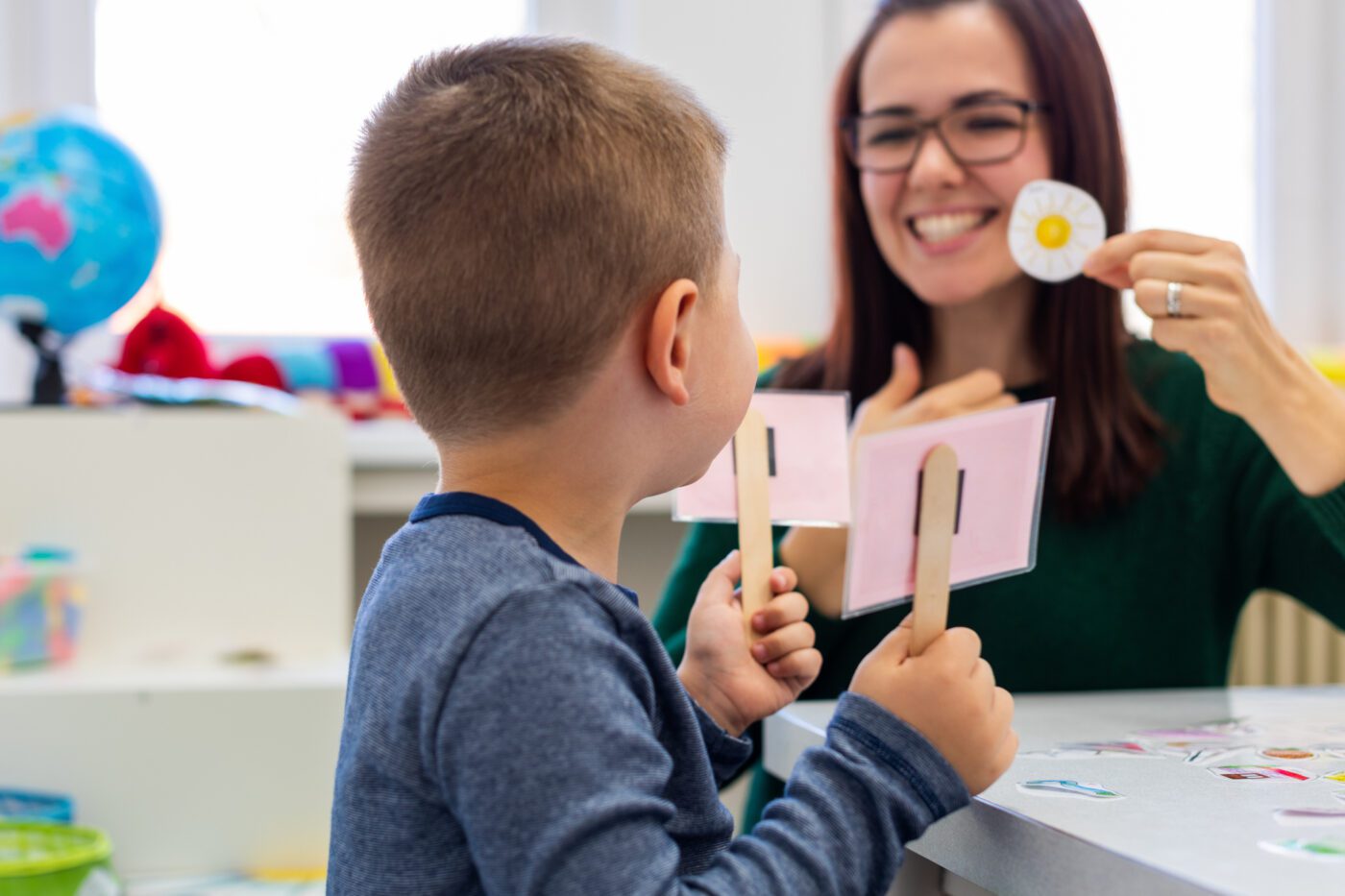Children with autism often have difficulties being understood or communicating their wants, needs, and emotions.
Whether your child is nonverbal or their speech unclear at times, their desire to be heard is no different than anyone else’s. However, an inability to effectively communicate with those around them — including parents, caregivers, family members, and teachers — can lead to frustration, aggressive behaviors, or other ways of acting out. Fortunately, lots of autism communication tools exist which can help your child better express his or her thoughts, make requests, and feel connected to their community.
Related: Switching Children With Autism from Alternative Communication to Vocal Language
Effective Communication Tips for Children with Autism
Before we discuss options for tools to consider, check out these communication tips when working with your child. As you build your communication strategy, keep the following in mind:
- Remember to always use your child’s name when you begin so they know you are addressing them.
- Ensure they’re paying attention before making a request, providing instructions, or asking a question.
- Engage them with their current hobbies, activities, or interests.
- Avoid open-ended questions (Instead of, “Did you have a good day?” you could ask “Did you have a good day or a bad day?”)
- Keep questions and requests short and direct (“Tie your shoes, please,” “No elbows on the table.”)
- Structure questions with offered options or choices (“Would you rather have Goldfish or Cheetos?”)
- Avoid sarcasm, metaphors, hyperbole, and rhetorical questions.
- Emphasize specific keywords and repeat when necessary.
- Avoid placing too much emphasis on non-verbal communication signals.
- Pause between sentences and questions to allow time to process what was just said.
- Avoid rushing a response.
- Be aware of your environment when communicating. If you’re in a noisy or crowded place in public, remember that it could affect your child’s processing.
These tips can go a long way in supporting effective communication with your child. When implemented properly, they can also help someone with ASD build confidence and the ability to adapt their communication to fit various situations.
Related: Early Communication Skills in Children with Autism
Autism Communication Tools
Proper tools can foster a sense of independence in your child with autism. There is no one-size-fits-all solution to communication. Rather, the right communication tools and tips will depend on a wide variety of factors, including your child’s:
- Fine motor skills
- Image-to-item correlation and response
- Decision-making abilities
- Knowledge of specific subjects
- Level of understanding of tone, word meanings, and body language
Here are some autism communication tools to explore:
Visual Support Tools
Visual support tools can refer to a range of tools such as photographs, flashcards, videos, symbols, drawings, miniature objects, or cue cards. Furthermore, these versatile tools can be printed, hand-drawn, or shown on a phone or tablet, making them extraordinarily adaptable to different environments and situations.
When using visual support tools, you can employ different techniques. Whether using them in combination with one another, as a means to help your child make decisions, using imagery to illustrate a point in a conversation, or as a way for your child to communicate messages, there are endless ways to incorporate visual supports into your communication strategy.
Voice Output Devices
iPads, smartphones, and other smart tablets can be used as voice output devices for children with ASD. These portable devices are great for on the go and can be customized to the individual user’s life, needs, desires, and more. Apps like GoTalkNOW and ProLoQuo2Go are wonderful options with good reviews that are downloadable from the App Store.
Nonverbal children can take advantage of these tools to communicate their wants and needs but must be tailored to their ability levels. Voice output devices may require more of an introduction and training period.
When used correctly, these technologies can be powerful tools in a larger communication strategy. However, parents and caretakers should remain vigilant in preventing against these devices from becoming distractions instead of tools.
Contact the Team at BlueSprig Today
Autism communication tools can help families communicate more effectively and support children with autism as they develop their skills, confidence, and abilities. The team at BlueSprig is here for parents and caregivers and can help implement the right communication system for your child’s needs.
Call BlueSprig at (209) 422-3280 for more information.
